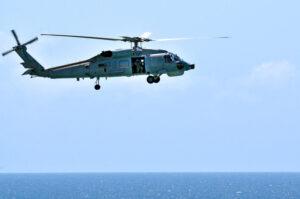A small aircraft carrying a senior couple and their dog vanished without a trace over Bass Strait on August 2, 2025, sparking an extensive multi-agency search operation across northern Tasmania and southern Victoria. The disappearance has drawn attention to the notorious waters between Tasmania and mainland Australia, an area long associated with mysterious aircraft and vessel disappearances.
Gregory Vaughan, 72, and his partner Kim Worner, 66, both of Deloraine, departed George Town Airport at approximately 12:45 p.m. in a distinctive green two-seater Bristell S-LSA aircraft. Their dog Molly was also aboard. The couple planned to fly to Hillston Airport near Condobolin in central-west New South Wales, with a scheduled fuel stop in Leongatha, Victoria.
Family members raised the alarm around 5 p.m. Saturday when the aircraft failed to arrive at its destination. No distress call, radio communication, or tracking data was received after takeoff, according to authorities. Tasmania Police Inspector Nick Clark confirmed that “the two people on the plane have not been in contact with anyone, or aviation authorities, since they left George Town.”
The Australian Maritime Safety Authority coordinated the initial search efforts, which involved helicopters, fixed-wing aircraft, and marine vessels from Tasmania Police, Victoria Police, and regional airline Par Avion. The Spirit of Tasmania ferry was temporarily diverted to assist in the search operation.
Search crews focused their efforts on Tasmania’s northern coastline, particularly between George Town and Turners Beach, as well as areas in Bass Strait and southern Victoria near Leongatha. Despite intensive air and sea searches conducted over multiple days, no wreckage or evidence of the aircraft has been located.
Vaughan, a retired engineer and experienced hobby pilot, was closely involved with the George Town Aeroclub. Worner, a retired nurse, was known for her dedication to community work. According to authorities, Vaughan had only recently acquired the Bristell S-LSA aircraft and was still becoming familiar with its operation, having purchased it three to four months before the disappearance.
The incident has raised questions about aviation safety protocols for private aircraft. George Town flight instructor Eugene Reid explained that pilots are required to make scheduled reporting when crossing Bass Strait, noting that aircraft leaving the coast should contact air services. However, the Australian Maritime Safety Authority confirmed that no such contact was made by the pilot.
Aviation experts noted that while small planes are not legally required to have automatic satellite tracking devices installed, they must carry emergency beacons when flying more than 50 nautical miles from land. The aircraft should have been equipped with an Emergency Position Indicating Radio Beacon, but no signal was detected from the device.
The disappearance occurred in the infamous Bass Strait, a stretch of ocean known for unpredictable weather, powerful winds, and poor radar coverage. The region, stretching roughly 186 miles between Tasmania and mainland Australia, has earned comparisons to the Bermuda Triangle due to numerous unexplained disappearances over the decades.
Historical incidents in the area include Frederick Valentich’s 1978 disappearance after reporting a UFO near King Island, Brenda Hean’s loss in 1972 during a protest flight to Canberra, and the MV Blythe Star freighter that went missing for 12 days in 1973 despite being within search range.
Weather conditions complicated search efforts throughout the operation. Low clouds and heavy weather grounded most water-based operations, while rough sea conditions prevented boats from participating in certain phases of the search.
Tasmania Police Northern Commander Marco Ghedini expressed grave concerns for the missing couple as the search entered its fourth day. He indicated that authorities would continue reviewing search operations daily while maintaining hope for a positive outcome. The Australian Transport Safety Bureau deferred inquiries to police while the search remained active.
Authorities urged members of the public across northern Tasmania and southern Victoria to remain alert for any signs of the aircraft or its occupants. Police specifically requested reports of unusual debris on land or in the water, including items such as life vests, broken plastic, or fabric that might help investigators determine the aircraft’s trajectory.
As of early September, authorities have not suspended search operations, and no new debris or wreckage has been located. The focus remains on areas near George Town, anomalies detected via satellite halfway across Bass Strait, and potential sites within 20 miles offshore. There’s still no sign of the aircraft or its occupants.

